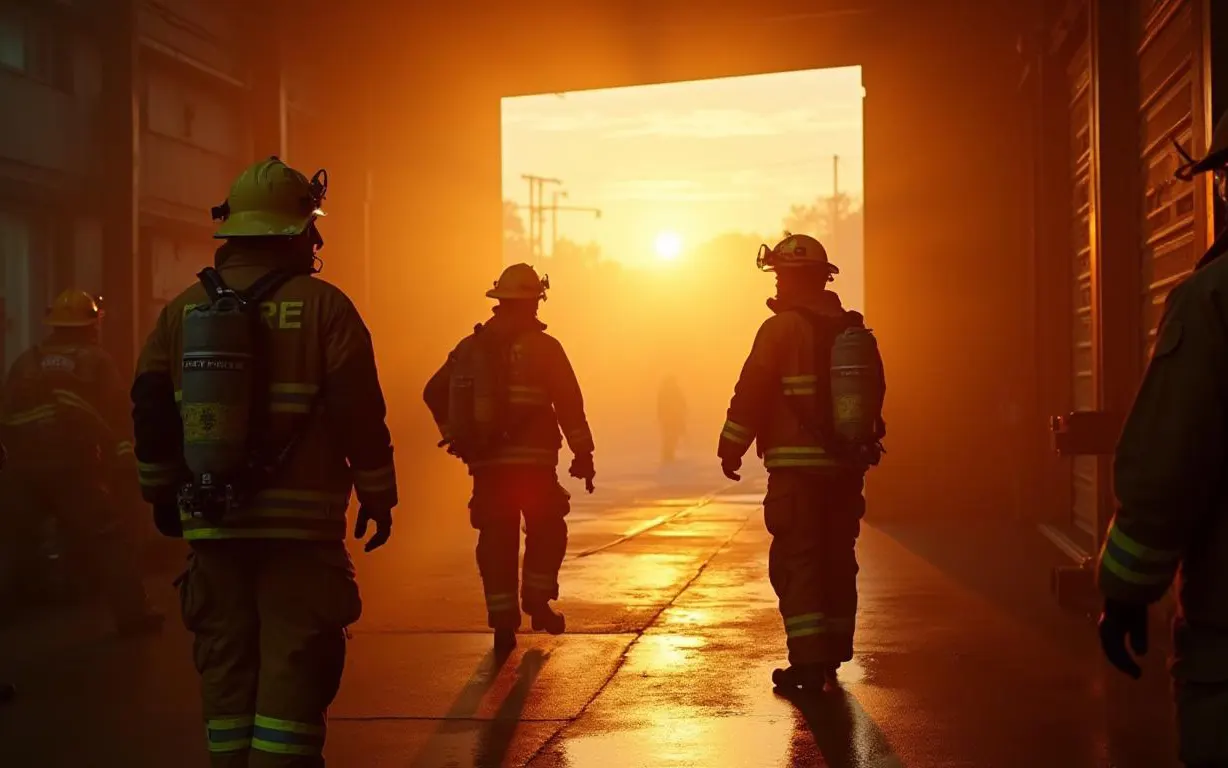In an era where emergency preparedness is paramount, the 2024 FEMA Assistance to Firefighters Grant (AFG) Program emerges as a beacon of support for fire departments, nonaffiliated Emergency Medical Services (EMS) organizations, and State Fire Training Academies (SFTAs) across the United States. With a substantial allocation of approximately $291.6 million for fiscal year 2024, this program stands as a testament to the nation’s commitment to enhancing the capabilities and safety measures of its firefighting and emergency response organizations.
A Legacy of Support
Since its inception in 2001, the AFG program has been a cornerstone of support for emergency services, distributing an impressive $8.7 billion in grant funding. This financial backing has translated into tangible improvements on the ground, providing essential resources that directly impact the safety and effectiveness of first responders. From state-of-the-art equipment and protective gear to emergency vehicles and comprehensive training programs, the AFG has consistently worked to fortify the front lines of emergency response.
The program’s primary goal extends beyond mere equipment provision; it aims to create a robust framework of preparedness. By improving compliance with safety standards and bolstering community resilience, the AFG program plays a crucial role in safeguarding both the public and emergency personnel from the ever-present threats of fire and related hazards.
Navigating the 2024 Grant Cycle
For the 2024 grant cycle, FEMA has outlined a specific window of opportunity for eligible organizations. The application period opens on November 12, 2024, at 9 a.m. ET and closes on December 20, 2024, at 5 p.m. ET. This six-week timeframe is critical for organizations to meticulously prepare and submit their applications, potentially securing vital funding for their operations.
The AFG program’s focus areas are strategically designed to address the multifaceted needs of emergency response organizations. The Operations and Safety category stands as a comprehensive pillar, encompassing everything from personal protective equipment (PPE) to wellness initiatives. This category recognizes that the safety of first responders is paramount and extends beyond just physical gear to include training programs and even facility modifications to ensure a holistic approach to safety.
Vehicle Acquisition, another key focus area, acknowledges the critical role that modern, well-equipped vehicles play in effective emergency response. This category supports the purchase of a range of vehicles, from firefighting apparatus to ambulances, ensuring that responders have the means to reach and address emergencies efficiently.
The Regional Projects focus area takes a broader view, aiming to improve interoperability and efficiency through collaborative initiatives. This approach recognizes that emergencies often require coordinated responses across jurisdictions and seeks to break down barriers to effective cooperation.
Crafting a Winning Application
The key to securing AFG funding lies in the preparation of a compelling and well-structured application. Organizations must go beyond simply listing their needs; they need to paint a vivid picture of their operational context and the critical impact the grant would have on their ability to serve and protect their communities.
Demonstrating a clear and critical need is paramount. This involves providing detailed, accurate data on call volumes and community risks. Applicants should dive deep into their operational statistics, presenting a clear narrative of how their current resources are stretched and where gaps exist. For instance, a rural fire department might highlight the challenges of covering a large geographic area with limited personnel and aging equipment, using specific incidents to illustrate the need for upgraded resources.
Explaining the potential impact of the grant is equally crucial. Applicants should articulate a clear vision of how the requested resources would transform their operations. This could involve scenarios demonstrating improved response times, enhanced firefighter safety, or increased capacity to handle complex emergencies. For example, an urban EMS service might detail how a new ambulance would allow them to better serve high-density areas during peak times, potentially saving more lives.
The application process demands comprehensive information across several areas. Applicants must provide detailed descriptions of their characteristics, including staffing levels, current equipment inventory, and operational challenges. A thorough community description is essential, painting a picture of the unique risks and demographics the organization serves. This might include factors like population density, industrial hazards, or natural disaster risks specific to the area.
Call volume data serves as a critical metric, offering concrete evidence of the organization’s workload and the demands placed on its resources. Organizational budget information provides context for the financial need, demonstrating how the grant would supplement rather than replace existing funding streams.
Preparing thorough narratives is where applicants can truly make their case. These should address financial need, providing a clear picture of budgetary constraints and how the grant would fill critical gaps. A cost-benefit analysis should demonstrate the long-term value of the requested resources, potentially including projections of lives saved, property protected, or operational efficiencies gained. The anticipated effect on operations narrative should vividly describe how the grant would transform the organization’s capabilities, potentially using scenarios or case studies to illustrate the impact.
Adapting to Changes in the 2024 Cycle
The 2024 cycle brings several important changes that applicants must navigate. FEMA has introduced a character limit for application narratives, emphasizing the need for concise, impactful writing. This change challenges applicants to distill their needs and potential impact into clear, compelling language without the luxury of lengthy explanations.
High-priority projects are now given preference, reflecting FEMA’s strategic focus on addressing the most critical needs across the nation. This shift requires applicants to carefully consider how their requests align with these priorities and to make a strong case for the urgency of their needs.
The equipment priority list has been updated, with items like suction units, CPAP devices, and carbon monoxide monitors now considered high priority. This change reflects evolving understanding of emergency response needs and technological advancements in the field. Applicants should review this list carefully to ensure their requests align with these updated priorities.
Some items, such as saunas and hyperbaric chambers, are now ineligible for funding under wellness and fitness activities. This change underscores the importance of focusing on core emergency response capabilities and evidence-based wellness interventions.
The Critical Role of Cost-Sharing
Cost-sharing remains a fundamental aspect of the AFG program, designed to ensure commitment and sustainability of funded projects. The required contribution varies based on the population served, with smaller communities contributing a smaller percentage. For populations of 20,000 or fewer, the contribution is set at 5%. This increases to 10% for populations between 20,000 and 1 million, and 15% for populations over 1 million. This tiered system recognizes the varying financial capacities of different communities while ensuring all recipients have a stake in the funded projects.
FEMA provides a cost share calculator to help organizations determine their required contribution accurately. This tool is invaluable for budget planning and ensures applicants can realistically assess their ability to meet the cost-sharing requirements before applying.
A Track Record of Impact
The AFG program’s impact on fire departments and emergency services across the country is substantial and far-reaching. Since 2018, it has funded over 800 fire apparatuses, equipping departments with modern vehicles capable of responding to a wide range of emergencies. The program has also provided 150,000 personal protective equipment items, ensuring that firefighters and EMS personnel have the latest in safety gear to protect them in hazardous situations.
Additionally, 126,000 other pieces of fire equipment have been distributed, ranging from advanced rescue tools to communication devices, enhancing the overall capabilities of emergency response teams. The program’s impact extends beyond equipment, with 915 recipients receiving funding to modify department facilities or implement wellness and fitness priorities. These initiatives protect firefighter health and create more efficient, effective working environments.
These resources have been distributed to more than 7,000 unique recipients, significantly enhancing the capabilities of emergency response organizations nationwide. The wide distribution ensures that communities across the country, from small rural towns to major urban centers, benefit from improved emergency response capabilities.
Navigating the Application Process
For organizations considering applying, early preparation is key to success. Ensuring that your System for Award Management (SAM) registration is current is a critical first step, as this registration is required for all federal grant applications. Obtaining your Unique Entity Identifier (UEI) number is another essential task, as this identifier is used across federal award processes.
Registering in the FEMA Grants Outcomes (FEMA GO) system is crucial, as this is the platform through which applications are submitted and managed. Familiarizing yourself with this system well in advance of the application deadline can prevent last-minute technical issues.
The AFG Application Checklist is an invaluable tool for gathering all necessary information. This comprehensive list ensures that applicants have all required documentation and data at hand before beginning the application process, streamlining the submission and reducing the risk of incomplete applications.
Post-Award Responsibilities
Securing an AFG grant is just the beginning of the journey. Recipients must adhere to several post-award requirements to ensure the effective use of funds and compliance with federal regulations. Compliance with all terms and conditions of the award is paramount, requiring careful management and oversight of grant-funded activities.
Regular performance reports are a key requirement, providing FEMA with updates on project progress and the impact of the funded resources. These reports are crucial for accountability and help FEMA assess the overall effectiveness of the AFG program.
Maintaining accurate records of all expenditures is essential for financial accountability and potential audits. Recipients must be prepared to provide detailed documentation of how grant funds are used, ensuring transparency and compliance with federal spending regulations.
Participation in the National Fire Incident Reporting System (NFIRS) is another important requirement, contributing to a national database of fire incident information. This data is crucial for understanding trends in fire incidents and informing future policy and funding decisions.
Achieving compliance with the National Incident Management System (NIMS) is also required, ensuring that grant recipients are aligned with national standards for emergency management and response. This compliance promotes interoperability and effective coordination during large-scale incidents.
Alignment with National Strategic Goals
The AFG program is not an isolated initiative but part of a broader strategic framework aimed at enhancing national preparedness and resilience. It aligns closely with the goals outlined in the DHS Strategic Plan for Fiscal Years 2020-2024 and the 2022-2026 FEMA Strategic Plan.
Specifically, the program supports the DHS goal to Strengthen Preparedness and Resilience, recognizing that well-equipped and trained emergency response organizations are crucial to national security and public safety. By providing resources and support to local fire departments and EMS organizations, the AFG program contributes to building a more resilient national emergency response infrastructure.
The program also directly contributes to FEMA’s objective of promoting and sustaining a ready and prepared nation. By enhancing the capabilities of first responders at the local level, the AFG program helps create a network of well-prepared communities capable of responding effectively to a wide range of emergencies.
Conclusion
The 2024 FEMA Assistance to Firefighters Grant Program represents a significant opportunity for fire departments and emergency response organizations to enhance their capabilities, ensure the safety of their personnel, and better serve their communities. By carefully reviewing program requirements, preparing a strong application, and clearly demonstrating need and potential impact, organizations can position themselves to secure this crucial funding.
The impact of this program extends far beyond the individual grants awarded. It contributes to a safer, more resilient nation, better equipped to face the challenges of natural disasters, accidents, and other emergencies. For fire departments and EMS organizations across the country, the AFG program is not just a source of funding – it’s a partnership in the vital mission of protecting lives and property in communities of all sizes.
As the application window approaches, eligible organizations should begin their preparations in earnest. The potential benefits of securing an AFG grant are substantial, offering the opportunity to significantly enhance emergency response capabilities and contribute to the safety and well-being of both first responders and the communities they serve.
Frequently Asked Questions
Here are answers to the frequently asked questions (FAQs) regarding the FEMA Assistance to Firefighters Grant (AFG) program, based on available resources:
1. What is the Assistance to Firefighters Grant (AFG) program?
The AFG program provides funding to enhance the safety and effectiveness of fire departments and emergency medical services (EMS) through grants for equipment, training, wellness programs, and other fire-related projects. Its goal is to improve response capabilities, reduce firefighter injuries and deaths, and assist with community resilience.
2. Who can apply for the AFG program?
Eligible applicants include:
- Fire departments, EMS, and State and local governments.
- Volunteer, paid, or combination fire departments.
- Tribally operated fire departments.
- Nonprofit organizations and other state or local agencies in support of fire prevention.
3. What are the different funding categories available?
The AFG provides funding across several categories:
- Operations and Safety: Firefighting, EMS equipment, and personal protective gear.
- Vehicle Acquisition: Funding for fire apparatus, vehicles, and trailers.
- Training: Courses, seminars, and firefighter wellness programs.
- Prevention: Funding for community risk reduction activities.
4. Can a department apply for multiple AFG grants in the same year?
Yes, a department may apply for more than one grant within a year, but the applications must be for different projects or categories. Each application will be considered individually.
5. What is the eligibility for the AFG program?
Eligibility criteria include:
- The applicant must be a recognized fire or EMS service.
- Applicants must meet certain funding requirements, including those for cost-sharing and project alignment with the program’s goals.
- Non-fire agencies, including EMS services, may be eligible under specific circumstances.
6. Are non-fire agencies eligible for the AFG program?
Yes, non-fire agencies such as EMS and other public safety agencies are eligible for AFG funding, but their applications must align with the program’s focus on safety and efficiency in firefighting and emergency services.
7. Can a department apply if they are already receiving another federal grant?
Yes, a department can apply for the AFG while receiving another federal grant, but the funds from the two grants cannot be used for the same project or expenses.
8. How do we determine if a grant meets the program’s objectives?
To determine eligibility, review the funding guidelines provided by FEMA. Your project must support the safety of firefighters, improve community preparedness, and enhance response capabilities. FEMA outlines these criteria in detail within the funding documents.
9. When does the application period open and close?
The opening and closing dates for each year’s AFG application period are announced on FEMA’s website. For FY 2024, the application deadline is December 20, 2024.
10. How do I apply for the AFG program?
Applications are submitted online through FEMA’s Integrated Financial Management Information System (IFMIS). Departments must create or use an existing account to apply, and ensure that all necessary documentation is included.
11. Do I need to provide matching funds for a grant application?
Yes, most grants require a cost-share or matching funds from the applicant. The amount varies based on factors such as the type of applicant (e.g., volunteer vs. paid department).
12. Are there specific requirements for submitting documentation?
Yes, documentation requirements include submitting project narratives, cost estimates, and justifications for the requested funding. Specific details for documentation are available through the application checklist.
13. What categories are eligible for funding under the AFG program?
As mentioned earlier, eligible categories include:
- Operations and Safety
- Vehicle Acquisition
- Training and Education
- Community Risk Reduction and Prevention
14. Can funds be used to purchase equipment or hire new personnel?
Yes, funds can be used to purchase eligible firefighting equipment and vehicles. However, they cannot generally be used to hire new personnel. For hiring, specific funding programs like the SAFER (Staffing for Adequate Fire and Emergency Response) grants apply.
15. What are the allowable and unallowable costs under the AFG program?
Allowable costs include:
- Firefighting gear and equipment
- Training materials and programs
- Vehicles and transportation equipment
Unallowable costs typically include:
- Salaries for new hires
- Office furniture or general administrative supplies
16. How are grant applications reviewed?
Applications are reviewed based on criteria such as project impact, cost-effectiveness, and the applicant’s alignment with the program’s goals of improving firefighter and community safety. High-priority projects may include equipment for hazardous conditions or training for new technologies.
17. What is the process for determining funding decisions?
FEMA uses a competitive process, scoring applications based on relevance to the program’s objectives, project description quality, cost effectiveness, and supporting documentation. Priority is often given to underserved or high-risk areas.
18. How will I know if my department has been awarded a grant?
Applicants will be notified via email once a funding decision has been made. Successful applicants will receive award details and instructions for managing their grant.
19. What are the reporting requirements once awarded a grant?
Awarded applicants must submit regular progress reports, including financial and programmatic updates. Detailed guidance will be provided in the award documentation.
20. How do I manage the funds if awarded?
If awarded, the department must adhere to the approved budget and project timeline. Funds must be spent according to the outlined goals, and any deviations may require prior approval from FEMA.
21. What happens if I do not use all the funds awarded?
Unused funds may need to be returned unless the applicant has received prior approval to reallocate them for a different purpose within the same category.
22. How do I request changes to my awarded grant?
Applicants can request modifications to their award by submitting a formal request to FEMA. This may include changes in project scope, budget reallocation, or project extensions.
For additional details, you can refer to the full list of FAQs and official documentation on the FEMA website: AFG FAQs.





0 Comments